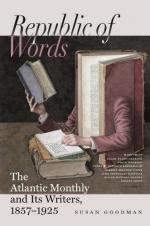Having discovered thus much about the poet, we now strike out in a new direction in search of his better half. Upon this point, unfortunately, there hangs a mist,—not impenetrable, as we conceive, but yet impenetrated,—a secret to which the given clue has been neglected, and which remains to the present day the opprobrium of a careless biography. The fact and the date of his marriage in Ireland are obtained from his own writings; but, further than that her name was Elizabeth,—a fact recorded by himself,—the lady of his choice remains unknown, her maiden name and family. Mere trifles these, to be sure,—but interesting in an antiquarian point of view,—and valuable, perhaps, should the inquiry hereafter lead some more than usually acute bookworm into the real mystery and meaning, the main drift of that inexplicable “Faery Queen.”
One difficulty in the matter is, that Edmund appears to have been a “susceptible subject.” He was twice attacked with the tender malady, and records, in glowing numbers, his passion for two mistresses. One he calls Rosalinde, and celebrates in the “Shepherd’s Calendar”; the other, Elizabeth, to whom he was undoubtedly married, is the theme of admiration in his “Amoretti.” Rosalinde was his early love; Elizabeth, the passion of his maturer years. When six-and-twenty, hopeless of Rosalinde, he wound up his philomel complainings of her cruelty by a formal commission to his friend Gabriel Harvey (Hobbinoll) to declare his suit at an end:—
“Adieu, good Hobbinoll, that was
so true;
Tell Rosalinde her Colin bids adieu.”
It took him fourteen years—surely a sufficient time!—to recover from this disappointment; for he is in his forty-first year, when, in his Sixtieth Sonnet, he represents himself as having been then one year enamored of Elizabeth:—
“So since the winged god his planet
cleare
Began in me to move, one yeare is spent;
The which doth longer unto me appears
Than all those fourty which my life outwent.”
That Rosalinde was not, as has been somewhat rashly conjectured, the poetic name of Elizabeth, is conclusively established by a poem written between 1591 and 1595, in which he speaks of some insurmountable barrier between them, why “her he might not love.” [1] The wife he loved, and the mistress between whose love and him there existed such a barrier, could not have been the same person, it is evident. But who this fair and false Rosalinde was, though known to many of his contemporaries, has become a mystery. That she was a real personage is placed beyond cavil by “E.K.,” the ostensible editor of the “Shepherd’s Calendar”; and he has given us a clue to her name, if we have but the wit to follow it. Now “E.K.” we more than shrewdly suspect to have been either Spenser himself, or his friend Gabriel Harvey, or both together. Two more egregious self-laudators are not to be found in the range of English literature: Spenser loses




